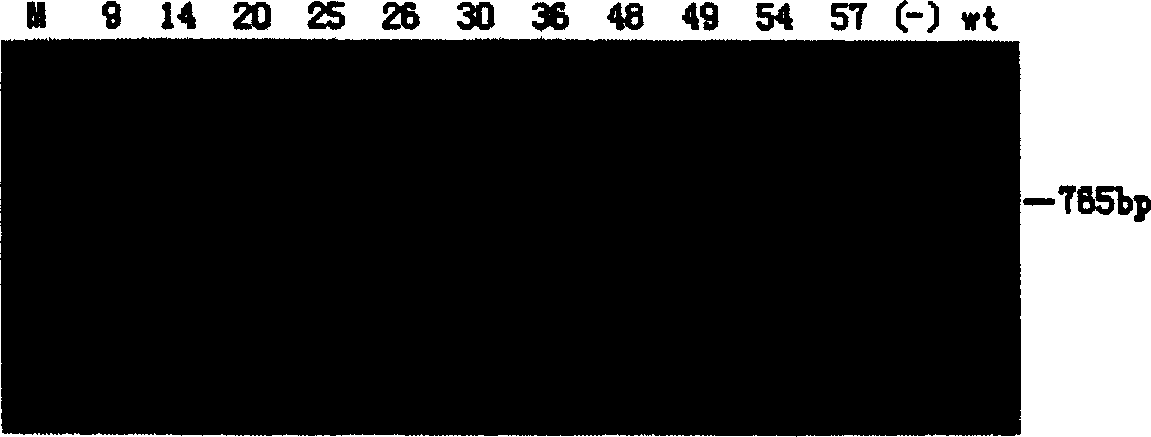Method for efficiently establishing pure line gene knock-out mouse model
A mouse and transgenic technology, applied in the field of transgenic technology, can solve problems such as rarely using mice
- Summary
- Abstract
- Description
- Claims
- Application Information
AI Technical Summary
Problems solved by technology
Method used
Image
Examples
Embodiment 1
[0050] Construction of IAP-TK plasmid
[0051] The primers IAPP1 and IAPP2 were synthesized, and the mouse cell genomic DNA was used as a template to amplify the fragment IAPP1P2 containing the IAP3' end; the primers IAPP3 and IAPP4 were synthesized to amplify the fragment IAPP3P4 containing the IAP5' end.
[0052] Primer
[0053] The IAPP1P2 fragment digested by BamHI and SalI was cloned into the SalI-BamHI site of pGL3-basic (Promega Company), and then the full-length hsv-TK gene (this fragment was obtained from pPNT (transgene available from University of Michigan) Animal Model Center)) was cloned into the XbaI-XhoI site, and finally the IAPP3P4 fragment was cloned into the KpnI-SmaI site to obtain the construction of the transgenic plasmid IAP-TK ( figure 1 ).
Embodiment 2
[0055] Introduction of hsv-TK into fertilized eggs of mice by microinjection and production of transgenic positive mice
[0056] After the transgenic plasmid IAP-TK was linearized with SalI and NotI, the fragments containing IAP and hsv-TK genes were recovered.
[0057] Linearized DNA (about 500 copies) was injected into the male pronucleus of mouse fertilized eggs, and the injected fertilized eggs were transplanted into pseudopregnant mice. About 20 days later, the mice were born. After 3 weeks of birth, the tail was cut to extract DNA, and PCR (hsv-TK gene-specific primers 5'-CCCCTTCTTCGCTGGTACGAGGAG-3'(SEQ ID NO: 5) and 5'-AAGCGCGTGGAGTTGACCTGAAGT-3'(SEQ ID NO: 6)) detection Analyze for transgene integration.
[0058] The result is as figure 2 shown. A total of 11 transgenic positive mice were obtained, and these mice were bred to establish lines, and a total of 3 transgenic mouse lines were established.
Embodiment 3
[0060] Expression of Transgene in Mouse Testis
[0061] In order to detect whether the IAP-TK fusion gene is expressed in mice, the total RNA of mouse salivary glands was extracted with Trizol reagent according to conventional methods. According to the Takara RNA PCR Kit (Ver2.1) manual, reverse transcription was performed, and then PCR amplification was performed to detect the expression of hsv-TK. The total RNA of transgenic mouse testis, epididymis, coagulation gland, seminal vesicle gland, heart, liver, lung, spleen, kidney, muscle, brain and other tissues were analyzed.
[0062] The results showed that hsv-TK was only expressed in testis tissue ( image 3 ).
PUM
 Login to View More
Login to View More Abstract
Description
Claims
Application Information
 Login to View More
Login to View More - R&D
- Intellectual Property
- Life Sciences
- Materials
- Tech Scout
- Unparalleled Data Quality
- Higher Quality Content
- 60% Fewer Hallucinations
Browse by: Latest US Patents, China's latest patents, Technical Efficacy Thesaurus, Application Domain, Technology Topic, Popular Technical Reports.
© 2025 PatSnap. All rights reserved.Legal|Privacy policy|Modern Slavery Act Transparency Statement|Sitemap|About US| Contact US: help@patsnap.com



